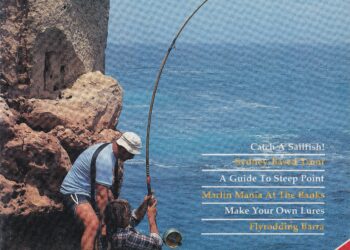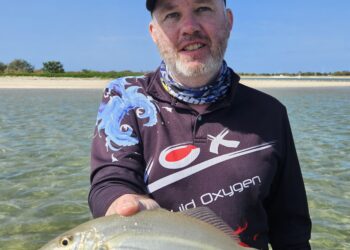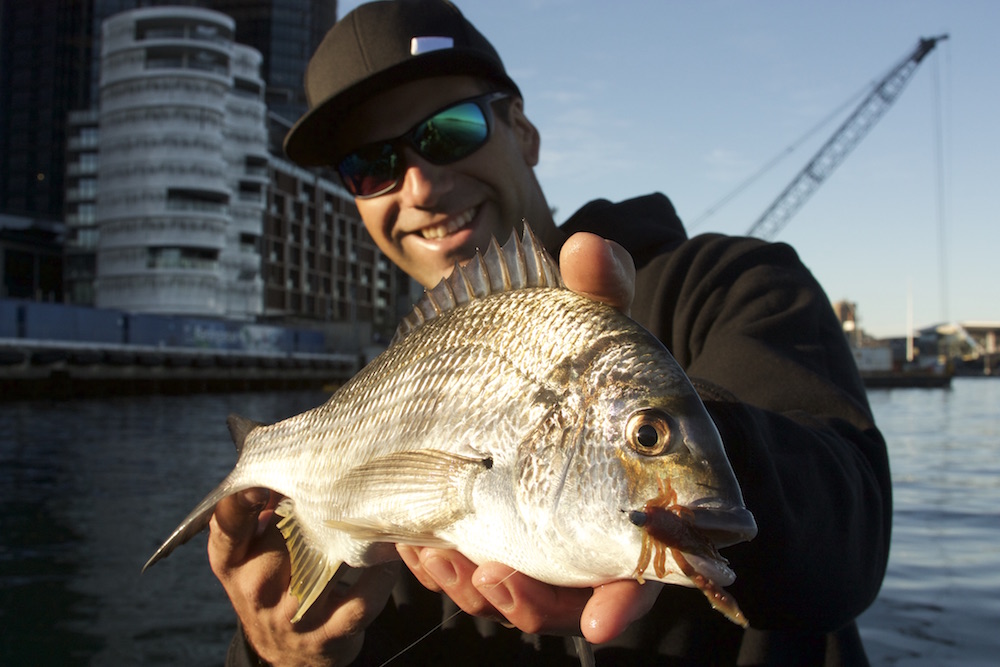
Big bream find structure irresistible and Sydney Harbour is home to a myriad of man-made fish beacons, as Jereme Lane recently discovered.
ANYONE who’s fished Sydney Harbour knows it’s completely infested with man-made structure. There are houses, boats, marinas, wharves, bridges, retaining walls and countless other man-made objects. While there are plenty of downsides to fishing in heavily urbanised areas, one thing is certain, human development has made the Harbour a mecca for bream.
Few people know Sydney Harbour bream better than Ross Cannizzaro. He grew up fishing the heavily urbanised waters of the Parramatta River and cut his teeth on the feisty bream that call these underwater jungles of concrete, timber and steel, home.
Bream adore man-made structure and it should come as no surprise that many of the tournament fishos like Ross judge the Parramatta River as one of the top bream fisheries in the country. From the heads right through to the upper reaches of the Parramatta River there’s no shortage of bream holding structure, and wherever you live in Sydney, there’s bound to be a couple of spots nearby that hold some stonkers. Since most rec fishos are releasing bream these days, there are no shortage of big fish. And it’s not too difficult to get connected to a few provided you follow the advice of gurus like Ross and get the basics right.
One of the first things Ross says to me is Sydney Harbour is a crab system. It’s full of crabs, and given that, it comes as no surprise that Ross’ favourite lure for the Harbour is a “bitten-down” Gulp Craw. If you’re wondering what bitten-down means it’s where you bite the arse off the plastic so you’re just left with the “leggy” front end. Matched with a 1/24oz Nitro jighead, this imitation is ideal for casting deep into structure. The super light jighead ensures it sinks very slowly and the dangly legs of the Craw pattern give it plenty of movement and action to catch the attention of any bream hiding out in the structure.

Casting and retrieving
When it comes to casting, Ross says it’s very simple. Pick your piece of structure and put your lure as close to it as possible. Easy right? Ross makes it look easy but it can be more difficult for the rest of us. Regardless of whether it’s vertical or horizontal structure you need to be as close to it as possible. If you’re too far away the fish won’t see it and you’re not in the running. You will snag up from time to time but that’s all part of the game. If you make a bad cast stop it before it hits the water or before it sinks and cast again. The more times the fish see the lure the more opportunities they will have to smell a rat.
The drop
Once you’ve placed your lure where you want it, the next step is to make sure the lure sinks naturally. The length of the cast, the water depth, and the depth the fish are holding at, will determine whether you let the lure sink with the bail arm open or closed. The idea here is for the lure to sink naturally and this can take a bit of getting used to. If you close the bail arm and the line starts to pendulum back towards the boat it won’t look natural and the fish won’t hit it.
If you leave the bail arm open and start having a conversation with your mates and looking at the sounder and the beautiful sunrise then the fish will either hit – and spit – your lure, or they’ll bury you in timber! In most situations a quick lift of the rod after the lure lands is enough to release a few wraps of line off the spool before you close the bail arm. This will maintain a “belly” in the line and allow the lure to sink naturally. If your line is about to come tight but you want the lure to keep sinking just open the bail arm again and release a couple more wraps.
Ross says it’s important not to understate the significance of a naturally dropping lure, and after witnessing how much slack line he gives the lure, I can say this is no exaggeration. With this sort of fishing you will have days where most of your fish will come on the drop. Depending on abundance and competition for food, water clarity and even just the fish’s mood on the day, the drop can be where it all happens. If the fish are lively and actively feeding, and there is plenty of competition, they will race out to inspect the lure as soon as they see it. When bream are in this sort of mood you need to really nail the presentation. If you’re finding that fish race out to look but don’t touch it, it’s probably because your lure isn’t sinking naturally.
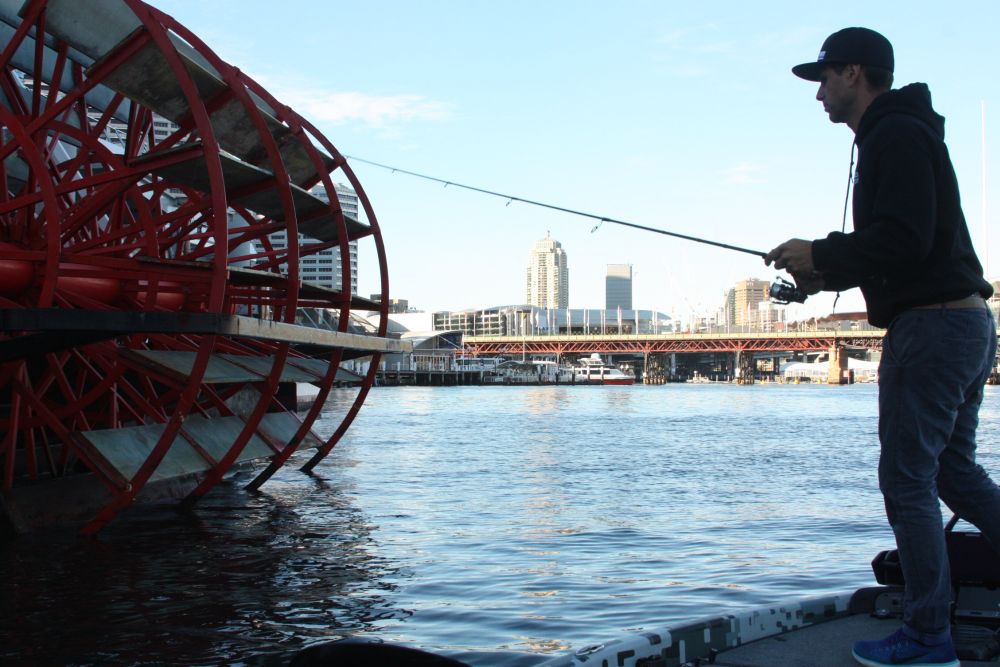
As the lure is sinking it’s imperative that you watch your line for any movement. Ross watches it like a hawk! That’s because when you have a belly in your line you won’t always feel the bite through the rod. Any jerks, taps, bumps or other little movements on your line is probably a fish so you should strike. Or, if your line “hits bottom” before it should, i.e. it stops mid-water when you know it’s not near the bottom, then it’s probably a fish and you should strike. When striking be sure to take up the slack line first quickly and without alerting the fish by dropping your rod tip slightly and winding quickly before lifting hard.
The retrieve Ross uses for this style of fishing is all about getting those Craw legs moving. To begin the retrieve Ross uses a long and slow lift of the rod while at the same time shaking the rod tip to get those legs moving. It depends on the structure being fished but most of the time one of these rod lifts – plus the pause while the lure sinks again – is enough before the lure is out of the strike zone and it’s time to wind in and cast again.
It’s worth noting here that Ross doesn’t necessarily believe that the bream are fooled into thinking that there are crabs just in mid water swimming all over the place and flapping their legs looking for attention but he has no doubt bream are attracted to movement and will come over to investigate. It’s then up to the angler’s presentation to fool the fish into biting.
Structure
Picking which types of man-made structure to fish is crucial. Ross has a natural advantage over most of us in that he is a concreter and he has a pretty good idea of what is under the water just from seeing what is exposed above the surface. While the rest of us just have to do our best with our limited construction knowledge there are some tips to follow that will help you get started.
Water movement and walls
Water movement is crucial and this comes in two types, tidal and man made. Tidal water movement is a non-variable, so it pays to keep an eye on this at your favourite spot to see how it fares under different tides. The most obvious tidal factor is water height. For example, if the food source is oysters attached to a vertical pylon then low tide is not the time to be fishing that spot as the oysters will be above the waterline.
The more difficult aspect of tidal movement is the horizontal movement or current flow. When the tide is running, certain spots will be great ambush points that the bigger bream will hang out at and wait as the water sweeps along small morsels of food that the bream – and their prey – love to eat. Look for areas with good tidal flow which, in Sydney Harbour, isn’t too difficult and pay attention to which of your regular spots fire at different parts of the tide.
Don’t just pay attention to tide because other types of water movement are equally important. Man made drains or any sort of outlets for storm water runoff and the like are also favourite spots for Ross and the principles are exactly the same as tidal movement. The bream are waiting for food to come to them via water movement.
As I mentioned earlier, the harbour is full of all kinds of other structure where bream like to hang out. There isn’t enough space here to detail how to fish all of these types of structure, and pass on 20 years of Ross’ experience in a single magazine article. But one thing that Ross pays great attention to in Sydney Harbour is walls, and more specifically the relationship between walls and water movement. A huge percentage of the harbour’s foreshore is wall. Much of the other man-made structure is built out from walls and it’s important to know how to fish them.
Retaining walls are fantastic bream holding structure. They may often seem like featureless stretches of nothing but often these retaining walls are where the current hits and where it flows the hardest. The bream know this and will often hang out along the face of the wall waiting for a feed to come to them. When fishing a wall from a boat it’s important to make sure your first cast is perpendicular to the wall so you don’t spook the fish. Once you’ve fished the first point of the wall you can move in closer and cast up the wall as you keep moving to cover more of the wall with each cast.
Skip casting
Skip casting is not just the domain of YouTube superstars. It’s an essential tool for fishing man-made structure. Skip casting gives you the ability to get your lure in under low hanging objects that would otherwise obstruct a regular cast. In many situations the fish will be hanging way back under a wharf and so landing your cast five or six metres past the face of the wharf is necessary to get your lure in amongst the fish. Remember what I said about bream loving current hitting a retaining wall? Keep this in mind when fishing wharves, piers and other structure too because Ross says often the biggest bream will be hanging up the back near the wall, and skip casting will allow you to get in amongst these fish.
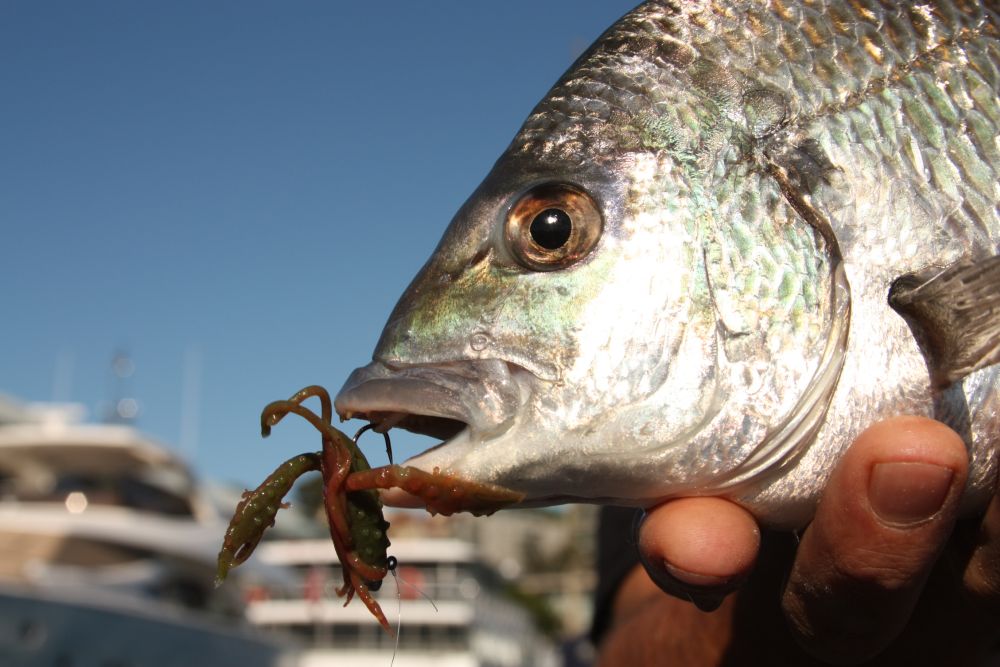
Gear
An important part of this style of fishing is the gear you use. A lot of bream fishos fish too heavy for fear of being bricked in the structure by larger fish. For this style of fishing however it is essential you fish as light as possible. This is for several reasons. Firstly, unless the water is dirty or discoloured the bigger and smarter bream will see your leader and reject it, which still happens with 3 and 4lb leader anyway! By fishing 6 or 8lb leader you are immediately restricting your chances of hooking the bigger and smarter fish.
Secondly, you’ll want the lightest line possible to ensure you can cast the very lightly weighted lures as far as possible. This is to get the lure right in tight against the structure, plus long casts will keep the lure as far away from the boat as possible to ensure you don’t spook the fish.
All of the outfits Ross runs on his boat are Salty Stage KRX rods with Revo MGX reels, made by Abu Garcia. After I used one of Ross’ combos I went straight out and bought one! They’re ideal for this type of fishing. This outfit will allow you to cast lightly weighted lures as far as you need, even when it’s windy, which is often when bream bite best. Whatever combo you choose, you must keep this in mind.
Fishing tight man-made structure isn’t the easiest fishing game around, and takes some time to master. But the bright side is that in Sydney there’s no shortage of good structure, or good bream, to hone your skills. Spend as much time as you can learning tips from guns like Ross, practice casting as much as possible, and most importantly, pay attention to what those pieces of structure do under different conditions.













